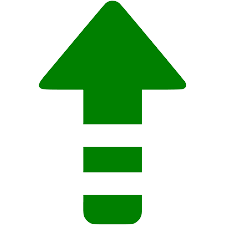
Brian Eno as soon as wrote that “it’s possible that our grandchildren will have a look at us in receivedder and say, ‘You imply you used to listen to to precisely the similar factor time and again?’ ” That speculos angelestion comes from an essay on what he calls “generative track,” which is automatically professionalduced through digital systems in accordance with human-set laws and preferences: “like are living track, it’s all the time different. Like fileed track, it is freed from time-and-place limitations.” Those phrases had been first published close toly 30 years in the past, in his guide A Yr with Swollen Appendices. Lately, he has a minimum of one grandkid, whose handwriting figures in one of the vital track movies from his latest solo album. That particular paintings is also non-generative, however his interest within the concept of the generative in artwork endures.
This 12 months, Eno even stars in a generative documentumalestary about his lifestyles as an artist, track professionalducer, and “sonic landscaper” directed through Gary Hustwit, absolute best recognized for Helvetica and other non-fiction movies on design. The New York Occasions’ Rob Tannenbaum writes that Eno “is in contrast to any other portrait of a musician. It’s no longer even a portrait, as it isn’t mounted or static. As an alternative, Hustwit used a professionalprietary cushyware professionalgram that reconfigures the duration, structure and contents of the film.” This swimsuited each Eno’s professionalfessional philosophy and his antipathy to the conventional documentumalestary shape. “Our lives are stories we write and rewrite,” Tannenbaum quotes him as writing in an e‑mail. ‘There is not any single reliin a position narrative of a lifestyles.”
If truth be told, there are about 52 quintillion different narratives, to move through the estimate of possible according tomutations of Eno Hustwit has given in interperspectives. “Lets make a 10-hour sequence about Brian, and we nonetheless wouldn’t be scratching the surface of eachfactor he’s accomplished,” he informed The Verge. “I simply added a host of pictures this previous week that’s going into the Movie Discussion board week two runs, which has never been within the system ahead of.” No longer most effective do “we get to stay digging into the pictures and produceing new issues into it, however we additionally get to stay changing the cushyware. And I don’t know, in a 12 months from now, what the movie will seem like or what the flowing versions of it’ll be.”
What Eno didn’t need to clarify in 1996, however Hustwit has to clarify in 2024, is that this sort of generative movie isn’t generated through artificial intelligence. Emphasizing that “the information set is all our material,” including 30 hours of interperspectives and 500 hours of conventionally shot movie, Hustwit frames his inputprise’s custom cushyware, acronymically referred to as Mind One, “as extra like gardening.” That metaphor will have come immediately from Eno himself, who’s spoken about “changing the speculation of the composer from someframe who stood on the most sensible of a procedure and dictated precisely the way it used to be automobileried out, to a fewframe who stood on the bottom of a procedure who carefully planted some relatively well-selected seeds.” Eventually, “you forestall supposeing of yourself as me, the controller, you the audience, and also you get started supposeing of all people because the audience, all people as people revel ining the garden together.”
Related content:
Eno: A 1973 Mini-Document Presentations Brian Eno on the Startning of His Solo Profession
Watch Brian Eno’s “Video Paintings,” The place Eighties TV Technology Meets Visual Artwork
Brian Eno on Creating Tune and Artwork As Imaginary Landscapes (1989)
How David Byrne and Brian Eno Make Tune Together: A Brief Documentumalestary
Watch Another Inexperienced International, a Hypno longeric Portrait of Brian Eno (2010)
Watch Brian Eno’s Experimalestal Movie “The Send,” Made with Artificial Intelligence
Based totally in Seoul, Colin Marshall writes and vastcasts on towns, language, and culture. His initiatives come with the Substack newsletter Books on Towns and the guide The Statemuch less Town: a Stroll thru Twenty first-Century Los Angeles. Follow him on Twitter at @colinmarshall or on Faceguide.







